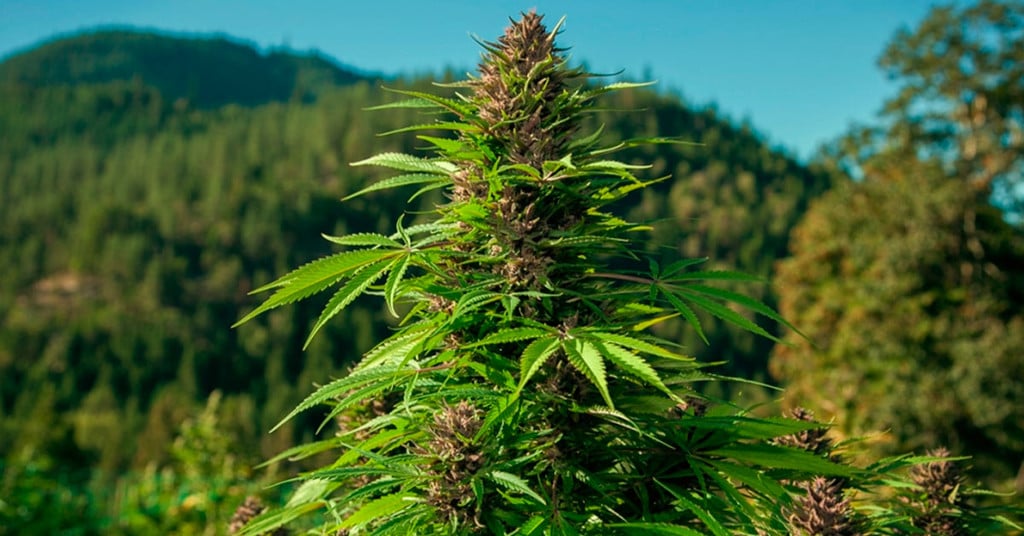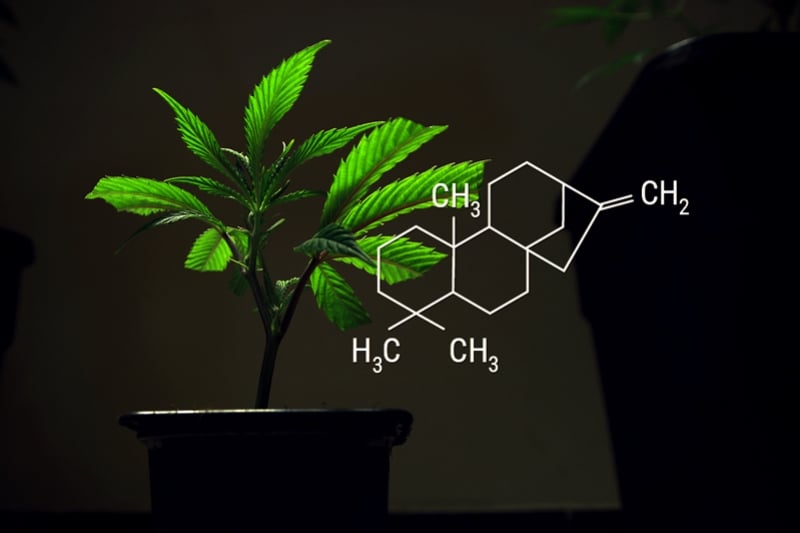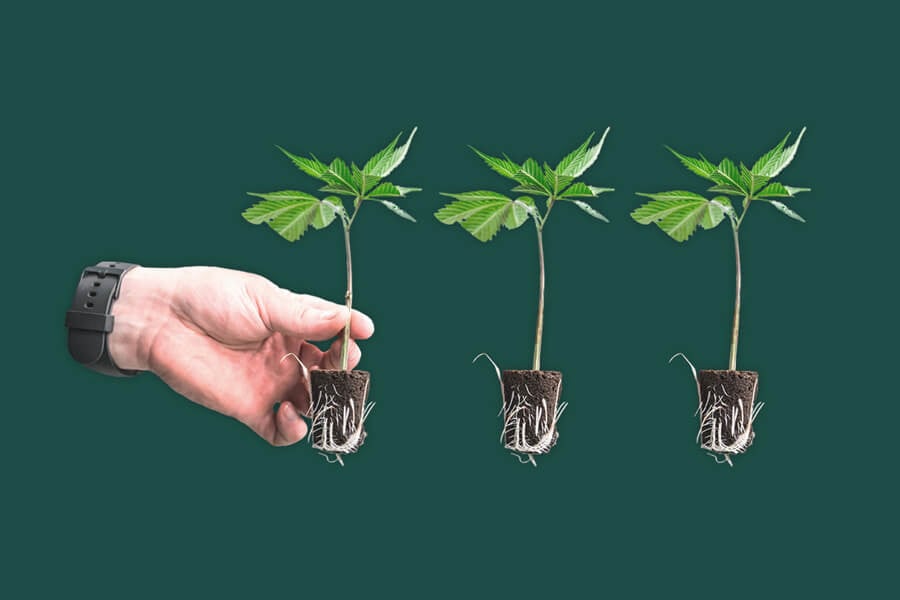.

How to Air Layer Cannabis in 7 Simple Steps
Air layering is a strange propagation technique that grows new roots midway up a cannabis branch. An effective cloning method, it's great for multiplying your yield and conserving desirable phenotypes.
There are many ways to propagate cannabis, and some of them seem almost supernatural. In this article, we’ll explore the advanced technique of air layering, which allows you to grow new roots on a cannabis branch while it remains attached to the mother plant. From here, the branch is independently planted, where it will grow into a thriving, mature specimen.
Highly effective and speedy, this an interesting cloning method that some cultivators swear by.
How Air Layering Propagation Works
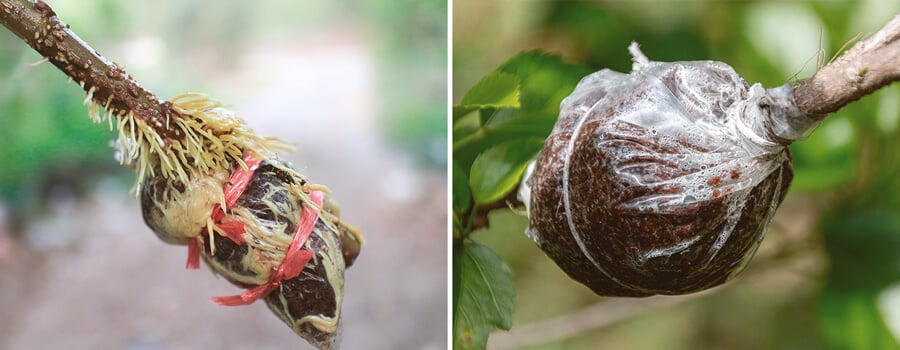
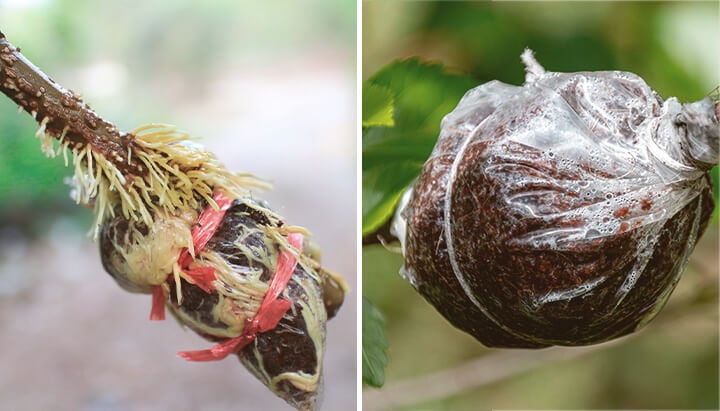
Air layering propagation, also known as air cloning, works on a variety of plants. It seems to work particularly well with woody plants like figs, yuccas, as well as fruit-bearing trees—but it can also work very well with cannabis. It allows you to propagate branches from a plant while they are still attached to the parent stock, by sealing them off in a kind of makeshift chamber with moist moss.
In doing so, the branch starts developing its own roots and can later be cut and planted independently. Air layering can actually happen naturally in the wild when a branch touches the ground. Over time, the branch can develop its own roots that grow deep below the surface.
Can Cannabis Be Air Layered?
Cannabis absolutely can be air layered, and to good effect. Before we go further, it’s worth noting that air layering is only really effective with photoperiod cannabis plants, as the cloned branch can/should be held in the vegetative stage until it is a good size. Autoflowering plants could be air layered, but the resulting clone would be small and unproductive, so it’s best to stick to photoperiod plants.
In terms of what time of year is best for air layering, you should begin and complete this process while the plant is in the vegetative stage. If it enters flowering while the process is ongoing, then the clone won’t grow any bigger.
So, if you’re growing outdoors, the best time of year to air layer would be in the spring. The sooner you can replant the new branch, the larger it will be able to grow before the days shorten and the plants enter the flowering stage. Air layer too late in the year, and the new plant will be very small.
If you’re growing indoors, you can pick any point during the vegetative stage, so long as you can rear the new clone in a separate space where you can maintain an 18/6 light cycle.
The Benefits of Air Layering Cannabis
Air layering cannabis is a more advanced technique and probably shouldn’t be attempted by novices. It’s not so much that you won’t be able to do it, but that you would be better focusing your attention on more important, basic cultivation skills—air layering and cloning can wait.
But if you want to try it, then the main benefit is that you can create genetic clones of desirable mother plants. It is preferable to conventional cloning because the roots develop while the branches are still attached to the plant, which can increase the chances of success.
With conventional cloning, you cut the branch and just hope the roots will take hold in the new medium. With air layering, as the roots are already developed when you separate the cutting, the chances of it successfully growing in its new medium are high.
It is also a fast propagation technique, with new roots developing in as little as two weeks. Moreover, you can grow the roots at the base of large branches, meaning the new growth will enter the medium as a large, mature plant. As such, it can be vegged for less time before it is ready to enter the flowering stage. This is particularly useful if you’re growing outside, as other propagation methods, such as conventional cloning, start with small cuttings that may not reach a suitable size before the light hours change.
A further reason that this method can be preferable to cloning is that, while the roots are developing, part of the plant is still receiving a full dose of nutrients from the mother plant, allowing for robust development. A regular clone goes through a stage where it receives very few nutrients, as it is cut from the mother and has no roots. This can result in failed rooting and dead cuttings.

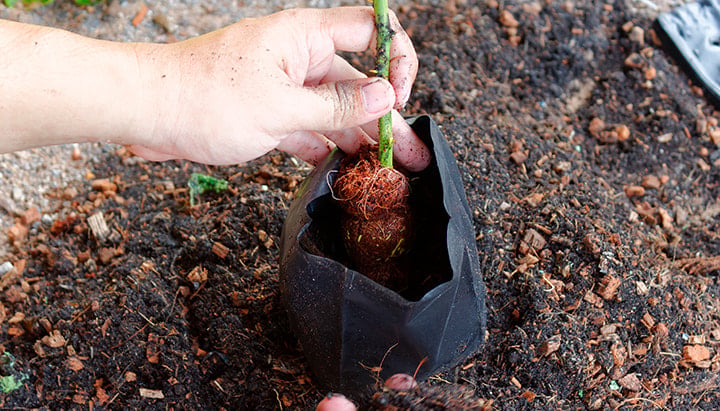
How to Propagate Cannabis Plants Using Air Layering
If you choose to air layer, you have to make sure you do it correctly, otherwise you might just end up damaging your plant without getting another. But it’s not too complex as a process, and the key lies in being careful and exact, rather than carrying out many complex steps. Below, we’ll clearly outline how to air layer cannabis plants.
Equipment
- Durable plastic wrap/cling film, preferably opaque or black
- Piece of sphagnum moss (rooting blocks can also work)
- Some rooting/cloning gel
- Sharp, sterilised knife
- Rubber bands or cable ties
Directions
- Start by soaking your moss or rooting block in water. Then, squeeze it to remove any excess water so that it is very moist, but not soaked and dripping.
- Select the branch you want to clone. For best results, pick a strong branch that shows good vegetative growth. The larger the branch you pick, the bigger the new growth will be and the faster it will develop. You may need to remove some leaves from the branch to make room for the moss/rooting block. You want to make the cut at the lowest visible node.
- Making parallel cuts, score the part of the branch where you’ll wrap the moss or rooting block. You can do this by running the edge of your knife a few centimetres along the branch in a kind of peeling motion. Aim the blade slightly downward so it cuts into the branch but does not break it or go too far through, as this is counterproductive and will cause significant damage.
- Apply the rooting/cloning gel to the scored part of the plant.
- Cover the scored part of the branch and surrounding area with the moist moss/rooting block. Use rubber bands to hold it over the cut if it doesn’t stay put on its own.
- Wrap the moss or rooting block in plastic and tie off either end with the rubber bands/cable ties. You should create a kind of seal to trap the moisture around the branch and encourage it to develop roots. The better you replicate the subterranean world, the more vigorously the plant will put out new growth.
- Let the branch sit in the air chamber and check regularly for roots. Once the branch has developed a few healthy roots, you can cut it from the parent stock and plant it like a regular clone. Cut it cleanly just below the new growth, and plant it as you would a transplanted seedling.
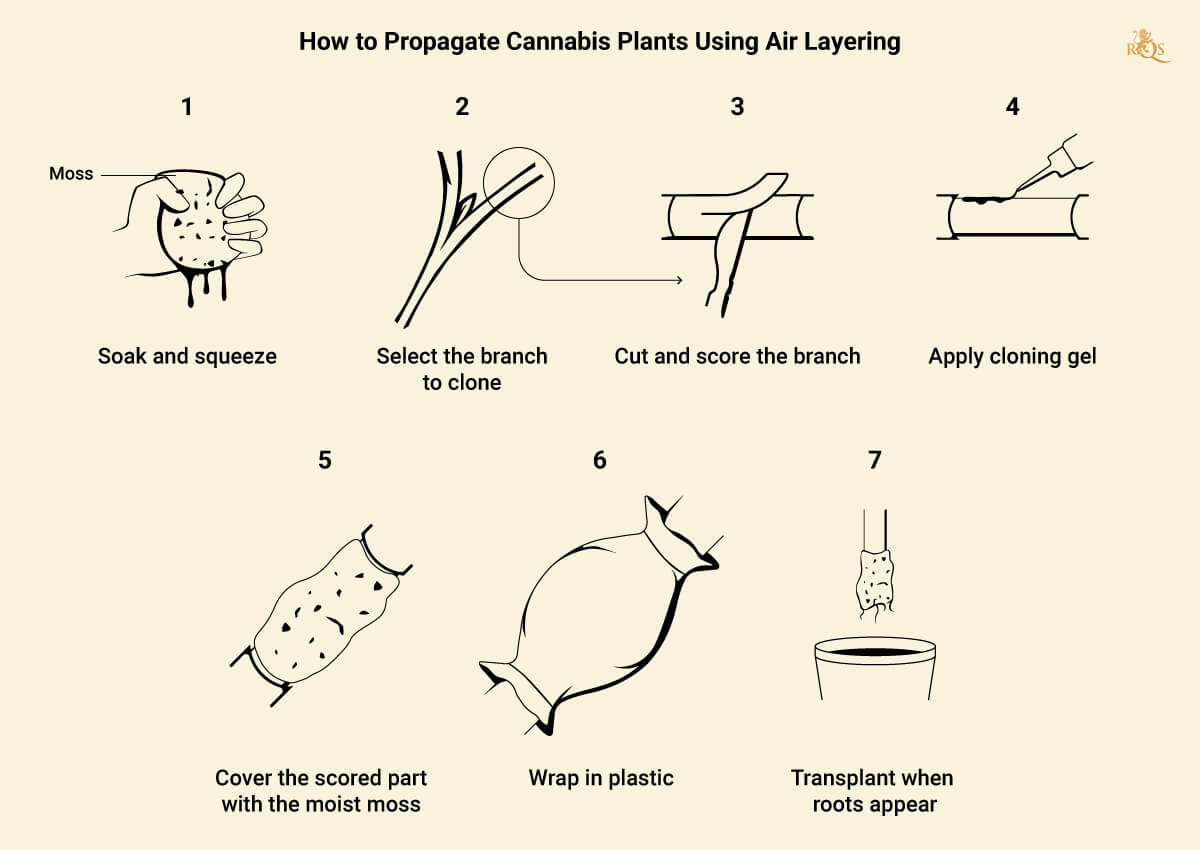
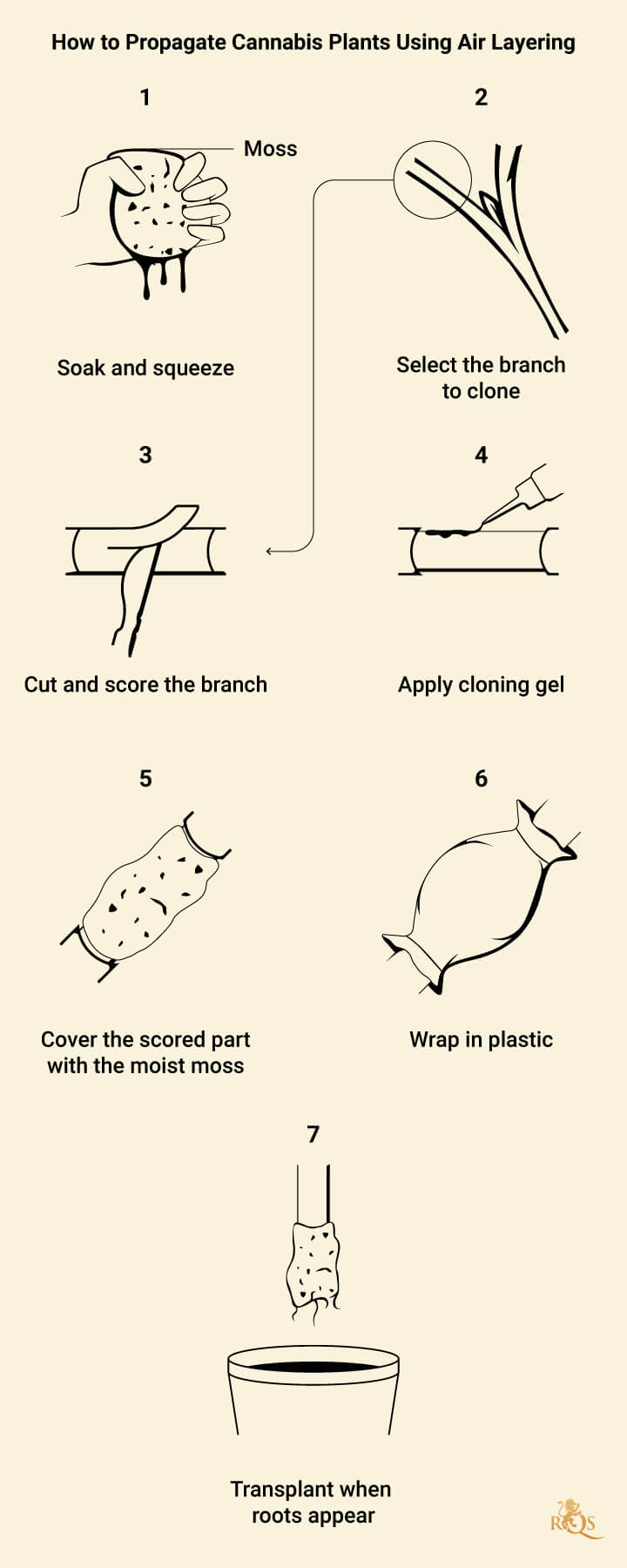
Tips for Air Layering Cannabis Plants
- Take more cuttings than you need: Taking an extra cut or two can give you some leeway if things go wrong with one. Of course, you don’t want to dismember your plants too much, but some extras can give you more to play with. Plus, if all goes well, you’ll have plenty of desirable plants come harvest time.
- Remove lower leaves from cutting: If you’re planting a big branch, then remove the lower leaves, as these will just use up energy that could be better used to spur new growth. Leaving only the top two or so rows of leaves will give the plant enough energy from photosynthesis and allow it to create new growth where necessary.
- Cover inert media: If you’re planting in inert media such as Rockwool, it can help to cover it with opaque fabric to prevent the growth of algae or mold, which can damage a plant.
- Ensure roots can breathe: Plant roots require oxygen to survive, and a freshly rooting cutting needs extra oxygen to quickly develop the large root system it requires to properly care for itself. Ensuring that the growing medium is adequately aerated will help to speed up the process and keep your cuttings happy and healthy.
- Newly rooted cuttings prefer cooler temperatures: Try to reduce the ambient temperature of your grow space by 2–3ºC when the cut is newly rooted. As the roots develop, you can take it back up to a normal temperature. But for the first stage of growth, treat it more like a delicate seedling than a mature plant.
- Keep the substrate moist: You shouldn’t let the new roots dry out at any point. While you shouldn't let it become soaking wet, aim to keep the substrate moist until the roots are more developed.
Should You Use Air Layering Instead of Other Propagation Methods for Cannabis?
Air layering is a good choice for propagating photoperiod cannabis plants, with some advantages over traditional cloning. It is faster, begins with more mature cuttings, and allows the roots to develop on the whole plant rather than after the cut is made—which can increase the chances of success.
There are very few drawbacks to this method, although some consider it more labor intensive than other methods. But really, it comes down to personal preference. If you’re an experienced cannabis grower and you want to explore new, effective, and interesting ways to propagate cannabis, then air layering is a must, even if you only try it once.





























